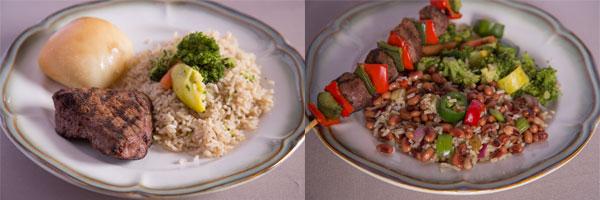The Diabetic's Guide to Eating Rice

Replace white rice with brown
If White Rice were to be a contestant on “Let’s Get These Blood Sugars Soaring” it would receive a standing ovation.
- It has a high score on the Glycemic Index - a list that grades foods according to how much they screw up your blood sugar.
- It’s naturally good at helping people develop diabetes.
Each additional servings of white rice a week increases your chance of developing diabetes by 10%. That’s eating more than 4 servings a week, and it’s no laughing matter, considering how common white rice is. Fried rice at the chinese restaurant? White. Favorite cajun dirty rice at the family reunion? White. Mexican rice at your aunt’s house? White. Rice and veggies steamer bag in the frozen food isle? Yup, white again. Not to mention the plethora of rice pastas and gluten free breads that rely on this cheap, processed and refined grain.
Brown rice is actually white rice that has not be stripped of its nutrients and refined. Two of those nutrients are fiber and magnesium - both of which have been shown to regulate blood sugar. Studies have shown that replacing white rice with brown rice even helps reduce the likelihood of developing diabetes.
Eat less rice overall for best blood sugar control
Replacing all white rice with brown rice is a good idea - reduces diabetes risk by 16%. Eating less rice overall is best - replacing rice with other grains reduces diabetes risk by 36%. Did you know a serving of rice is ½ cup? Here are some ways to make that half cup be enough.

Instead of filling your plate with brown rice and sprinkling in some veggies, eat a plateful of veggies sprinkled with ½ cup of brown rice. Want even better control? Adapt a habit from our south of the border friends and serve beans whenever you eat brown rice.
And since 5 servings of rice or more per week put you at higher risk of developing type 2 diabetes, add variety by replacing some rice with grains that are gentler on your blood sugars - quinoa, buckwheat, and wheat berries.
Add beans and veggies to brown rice for better sugar readings
Here’s the deal. Because brown rice still scores on the high end of the Glycemic Index, it’s best to serve it with foods that 1) are naturally high in fiber and 2) have little effect on your blood sugar. Those two qualifiers describe beans and veggies. Beans are the king of fiber-rich foods, and veggies are your free for all when it comes to blood sugar control. Well, except when it comes to potatoes. Those starchy guys are no bueno if you like being stable. Here’s an example making a typical steak dinner diabetic friendly.

Spend less time cooking rice
Cooking brown rice at home is easiest when done in a rice cooker, but if you’re lacking one of those, Uncle Ben’s has your back. In the rice aisle you can find 10 minute rice bags that are slightly cooked already, so it greatly reduces the time brown rice takes to cook. Seasoned brown rice packs that take 90 seconds to microwave are also plentiful in the rice aisle, however, if you’re mindful of the salt intake, those are not your best choice.
You can also find completely cooked brown rice in the frozen food isle of some grocery stores - including Walmart.
Go on a diabetic friendly recipe hunt
I’m a visual learner, so it helps if I can see a picture of a principle I’m trying to learn. So let’s play a little game.
- Open up this Pinterest rice recipes feed, and find a dish that would be a better choice for blood sugar control. Remember, you’re looking for brown rice, with lots of veggies or beans.
- Once you find a winner, click on the pin, open up the link, then copy the link.
- Paste the link in the comments feed below.
If you have ideas of how to Power Up the dish even more, list them in your comment. If you want more ideas on how to power up the dish, ask and I’ll be happy to give you some suggestions. Happy hunting!
Main points:
- How much rice? ½ cup serving/day at most. Less than 5 servings/week.
- Pairings for best control? Add beans and veggies to ½ cup of brown rice.
- Eat less rice: Replace rice with quinoa, buckwheat, or oats whenever possible.
References:
- Dr. Qi Sun, MD, ScD. White Rice, Brown Rice, and risk of Type 2 Diabetes in US Men and Women. Arch Intern Med. 2010;170(11):961-969
- E. A. Hu, A. Pan, V. Malik, Q. Sun. White rice consumption and risk of type 2 diabetes: meta-analysis and systematic review. BMJ, 2012; 344 (mar15 3): 10.1136/bmj.e1454
- B. Neal. White rice and risk of type 2 diabetes. BMJ, 2012; 344 (mar15 3): 10.1136/bmj.e2021
Full Plate Living is a small-step approach with big health outcomes. It's provided as a free service of Ardmore Institute of Health.

